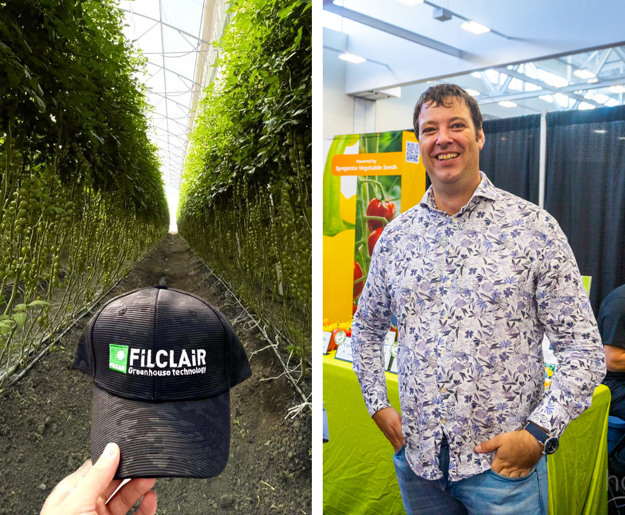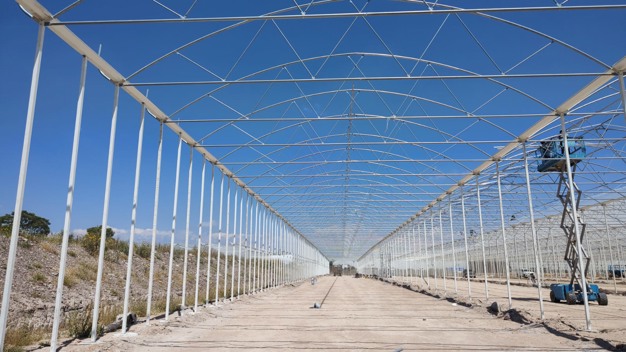With their new greenhouse model, the Filclair team offers growers the opportunity to benefit from both semi-closed cultivation and working in a plastic growing facility. "A double-layered plastic greenhouse offers a high insulation value, so you hardly lose heat," says Jelle Boeters of Filclair. "And semi-closed cultivation provides extra control over the climate, allowing for energy and CO2 savings."

Climate corridor and pad wall
The benefits of semi-closed cultivation are well-known, says Jelle, who is responsible for the Dutch subsidiary of Filclair. "By adding a climate corridor and a padded wall that blows treated outside air into the greenhouse, you can precisely control the climate in the greenhouse down to the degree. The outside air will be cooled to achieve the correct temperature inside the greenhouse. Thanks to this control, there is less need for ventilation, resulting in savings on heating, cooling, and, of course, CO2 emissions."
This is in addition to the overall high insulation values of double-layered plastic greenhouses. Combined with the availability of various greenhouse films to optimize the use of available light, this has created demand for these greenhouses in various places. Mexico has been an important market for Filclair in recent years, and the company is also active in the United States. "There is a need for expansion and knowledge," says Jelle. "As a supplier of quality plastic greenhouses, there are opportunities." As an example, he mentions that Filclair continuously measures with patented pressure sensors. "Different suppliers occasionally blow air into the double layer with timers. That's essentially guesswork. With pressure sensors, you know exactly when to apply extra pressure. It's an example of how the market values quality and security." He adds that the calculations used in their structures are based on the climate load constraints and the type of crop in the specific soil. "All the research and development are mainly focused on optimizing these conditions, promoting light and photosynthesis. With the semi-closed model, we've added a tool to optimize in more climates."
 The semi-closed model, with a climate corridor and pad wall
The semi-closed model, with a climate corridor and pad wall
Gas or water scarcity
There's demand in the Middle East and Australia, as well as in certain regions of America. "In regions where gas or water are scarce, the semi-closed greenhouse offers opportunities in terms of energy saving."
With the newly added semi-closed model, the team also provides an answer to growers' requests to cultivate with fewer external parameters, as it brings additional control options over the climate. In Asia, for instance, where both humidity and temperature are very high, this is valuable. "Most crops don't require this level of control, but to manage it properly, you need to isolate yourself from the local climate. Thanks to air handling units, humidity in a semi-closed greenhouse can be better controlled."

For more information:
Jelle Boeters
Filclair
Tel.: +31 623 141 992
Email: jelle.boeters@filclair.com
info@filclair.com
www.filclair.com
